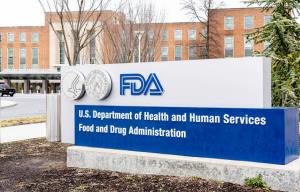 Politico published an expose on deficiencies at the U.S. Food and Drug Administration on April 9th relating to oversight of food safety. The Agency is responsible for all food products other than red meat and poultry that fall under the purview of the USDA Food Safety and Inspection Service (FSIS)-but that’s another story. The incisive article The FDA's Food Failure by veteran food jouurnalist Helena Bottmiller-Evich documents numerous structural and organizational factors responsible for inadequate protection of the U.S. population. Despite funding amounting to approximately $1 billion annually and an imperative from the Food Safety Modernization Act passed eleven years ago, U.S. consumers have probably less assurance of food safety than they did three administrations ago.
Politico published an expose on deficiencies at the U.S. Food and Drug Administration on April 9th relating to oversight of food safety. The Agency is responsible for all food products other than red meat and poultry that fall under the purview of the USDA Food Safety and Inspection Service (FSIS)-but that’s another story. The incisive article The FDA's Food Failure by veteran food jouurnalist Helena Bottmiller-Evich documents numerous structural and organizational factors responsible for inadequate protection of the U.S. population. Despite funding amounting to approximately $1 billion annually and an imperative from the Food Safety Modernization Act passed eleven years ago, U.S. consumers have probably less assurance of food safety than they did three administrations ago.
The Politico article was based on interviews with as many as 50 credible commentators, many of whom were previously senior administrators in the FDA and specifically in the Center for Food Safety and Applied Nutrition (FSAN) responsible for overview of food safety, nutritional labels and aspects of dietary health promotion. Comments advanced by those interviewed characterized FDA actions and culture as “byzantine”, “a joke” and “ridiculous”, representing a profound indictment of FDA capabilities and response to challenges.
During the past three years, the FDA has clearly demonstrated incompetence or indifference with regard to heavy metal content of infant foods, failure to respond to evidence of contamination of infant formulas, inadequate inspection of imported foods including seafood, spices and specialty products. Despite annual outbreaks of foodborne infection attributed to leafy greens emanating from the Yuma Valley of Arizona and from the Imperial Valley of California, FDA has yet to devise a preventive program against contamination with STEC, Listeria, Salmonella and now Cyclospora. Investigations of foodborne outbreaks as detected by FoodNet do not receive the diligent attention. The development of the 2010 Final Rule on prevention of Salmonella and subsequent implementation demonstrated an inability or disinclination to consult with poultry health professionals in industry and academia. The Final Rule ignored ST and SE vaccination that was universally in use. The first year of inspections by untrained FDA personnel reflected adversely on the Agency and but for delegation to state departments of agriculture the program would have been a failure.
The Politico article identified structural issues contributing in part to the dysfunction demonstrated by the FDA with respect to food safety. Frank Yiannas, the Deputy Commissioner for Food Policy and Response, who reports to the Commissioner of the FDA has no line authority. The Center for Food Safety and Applied Nutrition is directed by Dr. Susan Mayne reporting directly to the Commissioner. By virtue of their respective training and management styles, there is apparentl y a large measure of organizational and interpersonal conflict that impedes the mission of the Agency. Frank Yiannas has a background in commercial food production and distribution and is experienced in risk evaluation and applied aspects of food safety. He has been trained to rapidly evaluate problems and develop solutions followed by active implementation. In contrast, Dr. Mayne, although with considerable training in epidemiology and microbiology, demonstrates an academic approach requiring consensus but deferring decisions and action.
y a large measure of organizational and interpersonal conflict that impedes the mission of the Agency. Frank Yiannas has a background in commercial food production and distribution and is experienced in risk evaluation and applied aspects of food safety. He has been trained to rapidly evaluate problems and develop solutions followed by active implementation. In contrast, Dr. Mayne, although with considerable training in epidemiology and microbiology, demonstrates an academic approach requiring consensus but deferring decisions and action.
The situation as revealed in the Politico article has motivated Senator Patty Murray (D-WA), the Chairperson of the Senate Health, Education, Labor and Pensions Committee to initiate an enquiry. She has addressed a letter to Dr. Robert M. Califf, the newly appointed FDA Commissioner requesting answers to a series of pertinent questions requiring a response by April 25th. Senator Murray requested Dr. Califf to specify what organizational and structural changes he intends to make to improve performance and enforcement within CFSAN. Ongoing problems including contamination of baby formulas, lack of action on sodium levels in food and contamination of leafy greens have persisted for years and accordingly, the letter demanded an explanation for delays and the action that is planned to resolve problems implicit in delayed decision making. Senator Murray requested specific details on the number and frequency of food safety inspections conducted by the FDA according to food category and the intensity of analytical surveillance and results.
 Rearranging areas of responsibility within the FDA, especially if accountability and authority are not defined, will be analogous to rearranging deck chairs on the Titanic. The FDA has for many decades relegated food safety to the back burner, concentrating on drugs and medical devices. Even with this emphasis there are questions as to the frequency and rigor of inspections in pharmaceutical plants located in India and China that supply the bulk of generic drugs prescribed for our population.
Rearranging areas of responsibility within the FDA, especially if accountability and authority are not defined, will be analogous to rearranging deck chairs on the Titanic. The FDA has for many decades relegated food safety to the back burner, concentrating on drugs and medical devices. Even with this emphasis there are questions as to the frequency and rigor of inspections in pharmaceutical plants located in India and China that supply the bulk of generic drugs prescribed for our population.
There is also the added problem of divided responsibility for food safety. Red meat and poultry fall under the Food Safety and Inspection Service of the USDA, creating inter-agency conflict to the detriment of consumers. Given the evident farmer and packer orientation of FSIS and the ineptitude of FDA, U.S. consumers would be best served by a consolidated food safety agency as in the U.K. and the E.U. For a number of years EGG-NEWS and sister newsletter, CHICK-NEWS, have proposed the establishment of a sub-cabinet agency dedicated to food safety that would function with a dedicated and qualified group of administrators, scientists and field personnel. Activities conducted by FSIS and the FDA with respect to food safety would be combined for the benefit of efficiency and accomplishment. Simply throwing more money at the FDA or restructuring reporting relationships will not solve the problem of an inappropriate culture and the perception of food safety within the FDA as a neglected step-child, irrespective of the best intentions or competence of the Commissioner. Establishing a Food Safety Agency would be a radical change within the federal system but is probably justified by the incidence of foodborne outbreaks and the neglect of applied nutrition as a measure to promote public health. The proposed Food Safety Agency would require appropriate enabling legislation but would imply greater Congressional oversight that is now lacking.
When circumstances denote deficiencies in organizations and a lack of interaction between federal agencies, a crisis creates impetus for change. Over decades, we have seen the establishment of a Department of Defense coordinating separate Army and Navy Departments, the creation of the Department of Energy and most recently following the 9/11 event, the Department of Homeland Security.
It would be possible to combine the best resources and personnel within the existing USDA-FSIS and the FDA-CFSAN. A dedicated agency would eliminate turf fights as evidenced by the delays over development of GM-derived foods or cell-cultured meat and would contribute to more effective and focused rules, oversight and a safer food system.
Whether or not a consolidated Food Safety Agency is created will depend on various pressures, both for and against. There is generally reluctance by Congress to make radical changes. Packers have developed a modus vivendi with FSIS and are disinclined to change given an understanding of systems and implementation of regulations. Lobbyists that infest downtown DC in profusion will protect the interests of their clients including food processors and manufacturers in addition to consumer advocacy organizations. There will be strong resistance from both the FDA and the USDA since a proposed food safety agency would result in a smaller area of turf. Budgetary allocations and numbers of employees are the basis on which departments and administrators measure their status in Washington. In the past when confronted with hints of consolidation the FDA the CDC and USDA sign memorandums of cooperation and then knowingly revert to the status quo, a real-life ongoing U.S. version of the BBC Yes Minister series.
The events of 9/11, similar to the launch of Sputnik were sudden in their event but resulted in rapid changes in administrative structures and resource allocation. The problems of food safety and public health are insidious but require no less of a response in the form of restructuring and implementation. The system is so broken that it cannot be repaired with either duct tape or red tape. A radical approach in the form of a consolidated Food Safety Agency is long overdue.